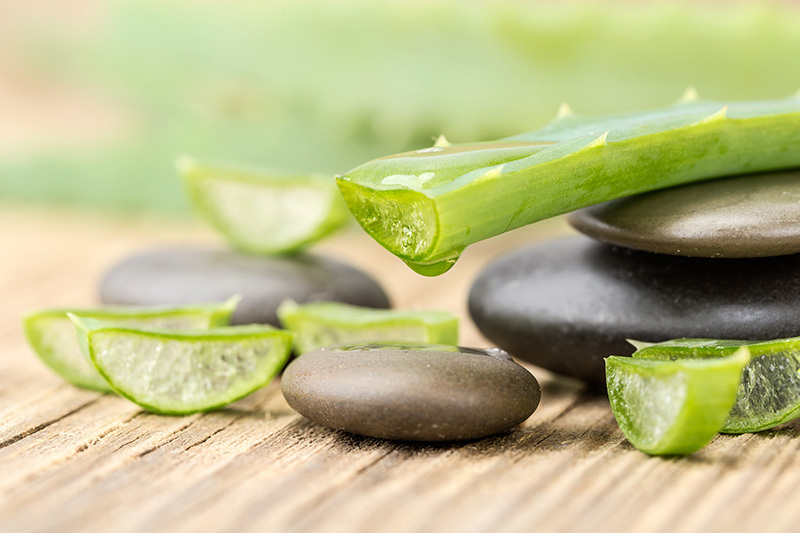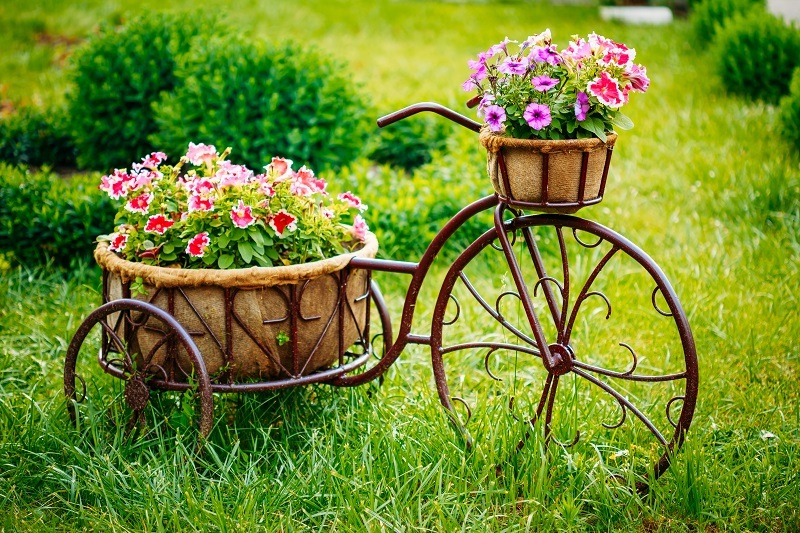Your Step-by-Step Guide to Nurturing Hydrangeas Successfully
Posted on 25/08/2025
Your Step-by-Step Guide to Nurturing Hydrangeas Successfully
If you're captivated by hydrangeas' lush blooms and architectural beauty, nurturing these ornamental shrubs in your own garden is a deeply rewarding venture. Hydrangeas are perennial favorites for gardeners worldwide due to their versatility, vivid flower clusters, and ability to thrive in various climates. Whether you're a seasoned green thumb or a gardening beginner, this comprehensive guide will empower you to grow and care for hydrangeas with confidence.
1. Understanding Hydrangeas: Types and Characteristics
Before you dig in, it's vital to get acquainted with the different hydrangea varieties. Each type has unique needs, bloom periods, and visual appeal. Here's an overview to help you choose the best fit for your garden:
Main Hydrangea Species
- Hydrangea macrophylla (Bigleaf Hydrangeas): Famous for their bold, mophead or lacecap flowers and color-changing blooms based on soil pH.
- Hydrangea paniculata (Panicle Hydrangeas): Recognized by their cone-shaped panicles, these are hardy and reliable bloomers.
- Hydrangea arborescens (Smooth Hydrangeas): Notable for their large, white flowers, like the beloved 'Annabelle.'
- Hydrangea quercifolia (Oakleaf Hydrangeas): Named for their unique leaf shape and stunning fall color.
- Hydrangea serrata (Mountain Hydrangeas): Compact and hardy with delicate blossoms.

2. Choosing the Right Hydrangea for Your Garden
When nurturing hydrangeas, selection matters. Consider these factors before you buy:
- Climate: Some hydrangeas withstand fierce winters (like Panicle and Oakleaf), while Bigleaf hydrangeas prefer milder zones.
- Space: How large is your space? Bigleaf varieties can reach up to 6 ft., but others are compact junior versions, ideal for containers.
- Sunlight: Does your garden enjoy full sun or part shade? Hydrangeas have different light needs based on species.
- Soil: Is your soil acidic or alkaline? Macrophylla hydrangeas, for instance, rely on pH to set bloom color.
3. Planting Hydrangeas: Step-by-Step
Optimal Planting Time
- Best Season: Plant during early spring or fall when temperatures are mild. This timing stresses the plant the least.
Choosing the Site
- Light: Choose a location that offers morning sun and afternoon shade, especially for Bigleaf and Oakleaf hydrangeas. Panicle hydrangeas may tolerate more sun.
- Soil: Hydrangeas prefer well-draining, rich, and porous soil. A loamy mix is best.
Planting Steps
- Dig a hole twice the width of your hydrangea's root ball and as deep as the root ball itself.
- Loosen the roots and position the plant so that the root crown rests level with the surrounding soil.
- Backfill with a mix of original soil and compost or aged manure for a nutrient boost.
- Water the plant thoroughly to settle the soil and eliminate air pockets.
- Mulch generously around the base to retain moisture and regulate temperature.
4. Watering Hydrangeas: How and When
Proper watering is the foundation of hydrangea care. These plants boast large leafy canopies and require consistent moisture, especially during establishment and blooming periods.
- Water deeply twice a week: Aim for 1 inch of water weekly, more during intense heat.
- Mulch to retain moisture: A 2-3 inch layer of mulch will conserve water and reduce weeds.
- Avoid wet feet: While moisture is essential, never allow your hydrangeas to sit in boggy soil, which can cause root rot.
5. Feeding and Fertilizing for Vigorous Growth
To nurture hydrangeas that burst with blossoms, fertilization is key, but timing and type are crucial.
- General feeding: Apply a slow-release, balanced fertilizer (10-10-10 or 12-4-8) in early spring as new growth appears.
- Extra boost: Bigleaf hydrangeas often appreciate a second light feeding in summer, but avoid late-season fertilizing to prevent forcing tender growth before frost.
- Soil amendments: Incorporate organic matter like compost each year to maintain fertility.
6. Pruning Hydrangeas: When and How to Prune
Pruning hydrangeas encourages fresh blooms, shapes the shrub, and removes dead wood. But the technique depends on the variety.
Pruning by Type
- Bigleaf and Oakleaf Hydrangeas: Prune immediately after flowering since they bloom on old wood (the previous year's growth).
- Panicle and Smooth Hydrangeas: Prune in late winter or early spring. They flower on new wood (current year's growth), so heavy pruning won't hinder blooms.
Remove spent flowers (deadheading), damaged stems, and overgrown branches annually. For major rejuvenation, cut back one-third of the oldest stems to the base.
7. Changing Hydrangea Bloom Color
Did you know you can influence the color of hydrangea flowers? Particularly Hydrangea macrophylla (Bigleaf) varieties.
- For Blue Flowers: Maintain acidic soil (pH 5.2-5.5) by adding soil acidifiers like aluminum sulfate or pine needles.
- For Pink Flowers: Encourage alkaline conditions (pH 6.0-6.2) by incorporating garden lime into the soil.
Note: White hydrangea blooms generally do not respond to pH changes.
8. Protecting Hydrangeas from Pests and Problems
Hydrangeas are generally pest-resistant, but threats do exist. Here's how to nurture your plants organically and prevent damage:
- Aphids and spider mites: Spray with a gentle stream of water or apply insecticidal soap if infestation spreads.
- Slugs and snails: Hand-pick or use copper tape to deter these pests.
- Powdery mildew: Ensure good air circulation, avoid wetting leaves when watering, and prune densely packed stems.
- Leaf spot or blight: Remove and dispose of infected foliage and avoid overhead irrigation.
9. Winter Protection for Hydrangeas
Certain varieties need extra winter care, especially in colder regions:
- Mulch heavily: Apply 6-12 inches of straw, pine needles, or shredded leaves around the base after the ground freezes.
- Wrap with burlap: Use burlap or frost blankets for additional insulation, especially for Bigleaf and Oakleaf hydrangeas.
- Water well in autumn: Well-hydrated plants bear winter stress better.
10. Propagating Hydrangeas: Sharing Your Success
Once you've mastered hydrangea care, propagation lets you multiply your success:
- Softwood cuttings: In early summer, snip a non-flowering shoot, dip the end in rooting hormone, and plant it in moist potting mix.
- Layering: Bend a low-growing branch to the ground, scratch the bark, and anchor it. Roots should develop in a few months.
Nurture new plants in partial shade until they're established, then transplant to their permanent spot in your garden.
11. Hydrangea Care Tips for Every Season
Spring
- Remove winter mulch after the last frost.
- Prune dead stems and lightly shape as new growth appears.
- Apply balanced fertilizer and water deeply.
Summer
- Check soil moisture and water during dry spells.
- Deadhead spent blooms for tidy appearance.
- Monitor for pests and diseases.
Autumn
- Cease fertilizing to allow growth to harden before winter.
- Apply mulch and prepare winter protection if necessary.
Winter
- Monitor for weather damage and replenish mulch as needed.
12. Common Hydrangea Problems and Solutions
- Wilting or drooping leaves: Usually a sign of underwatering or transplant shock. Water deeply and mulch to conserve moisture.
- Few or no blooms: Over-pruning, late spring frosts, or too much nitrogen can all reduce flowering. Prune at the correct time and shelter sensitive types from frost.
- Yellowing leaves: May indicate poor drainage or overwatering. Amend soil or adjust your watering habits accordingly.
13. Hydrangea Varieties for Any Space
Don't have a huge garden? Try these compact or container-friendly hydrangeas:
- 'Cityline' Bigleaf hydrangeas - petite and colorful for small gardens and planters.
- 'Little Lime' panicle hydrangea - a dwarf version perfect for beds or containers.
- 'Invincibelle Wee White' smooth hydrangea - robust dwarf form with big white blooms.
14. Hydrangeas in Landscape Design
Hydrangeas are extraordinarily versatile in the landscape. Use them as:
- Foundation plantings for visual drama.
- Hedges for summer privacy and lushness.
- Specimen plants for show-stopping impact.
- Mixed borders with ferns, hostas, or evergreens for extended interest.

15. Frequently Asked Questions About Growing Hydrangeas
Can I grow hydrangeas in pots?
Absolutely! Many hydrangeas thrive in containers given proper drainage, quality potting mix, and regular water. Compact hydrangea varieties are best for pots.
When do hydrangeas bloom?
Most hydrangeas bloom from late spring to early fall, with precise timing based on variety and climate. Deadhead regularly to encourage repeat flowering.
Do hydrangeas like sun or shade?
Yes, but in moderation. Most hydrangeas prefer morning sun and afternoon shade. Too much direct, harsh sun can scorch leaves and wilt flowers.
Conclusion: The Joy of Successful Hydrangea Nurturing
Nurturing hydrangeas is an enriching journey that rewards patient gardeners with spectacular blooms, stunning color variations, and extended enjoyment year after year. By choosing the right variety, providing ideal conditions, feeding, pruning, and protecting your hydrangeas, you're setting the stage for hydrangea success in any garden or outdoor space.
Ready to transform your landscape? Follow this step-by-step hydrangea care guide, and soon you'll be surrounded by healthy, vibrant hydrangeas that delight every season!
For more tips on nurturing and growing hydrangeas successfully, bookmark this guide and start your hydrangea journey today.
Latest Posts
Peony flowers and their fascinating symbolism explained
Your Step-by-Step Guide to Nurturing Hydrangeas Successfully
From Orchids to Carnations: 12 Long-Lasting Flowers







